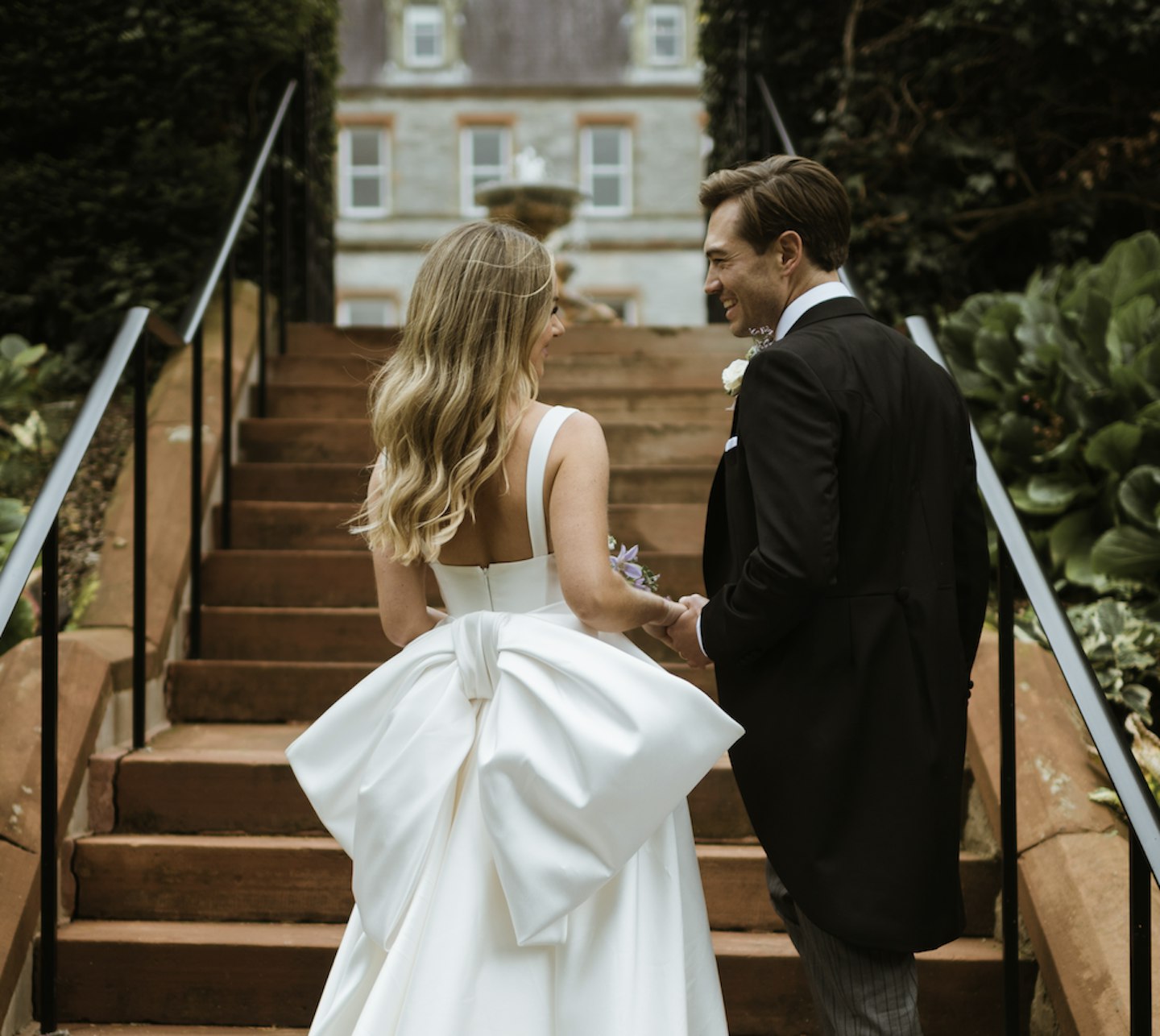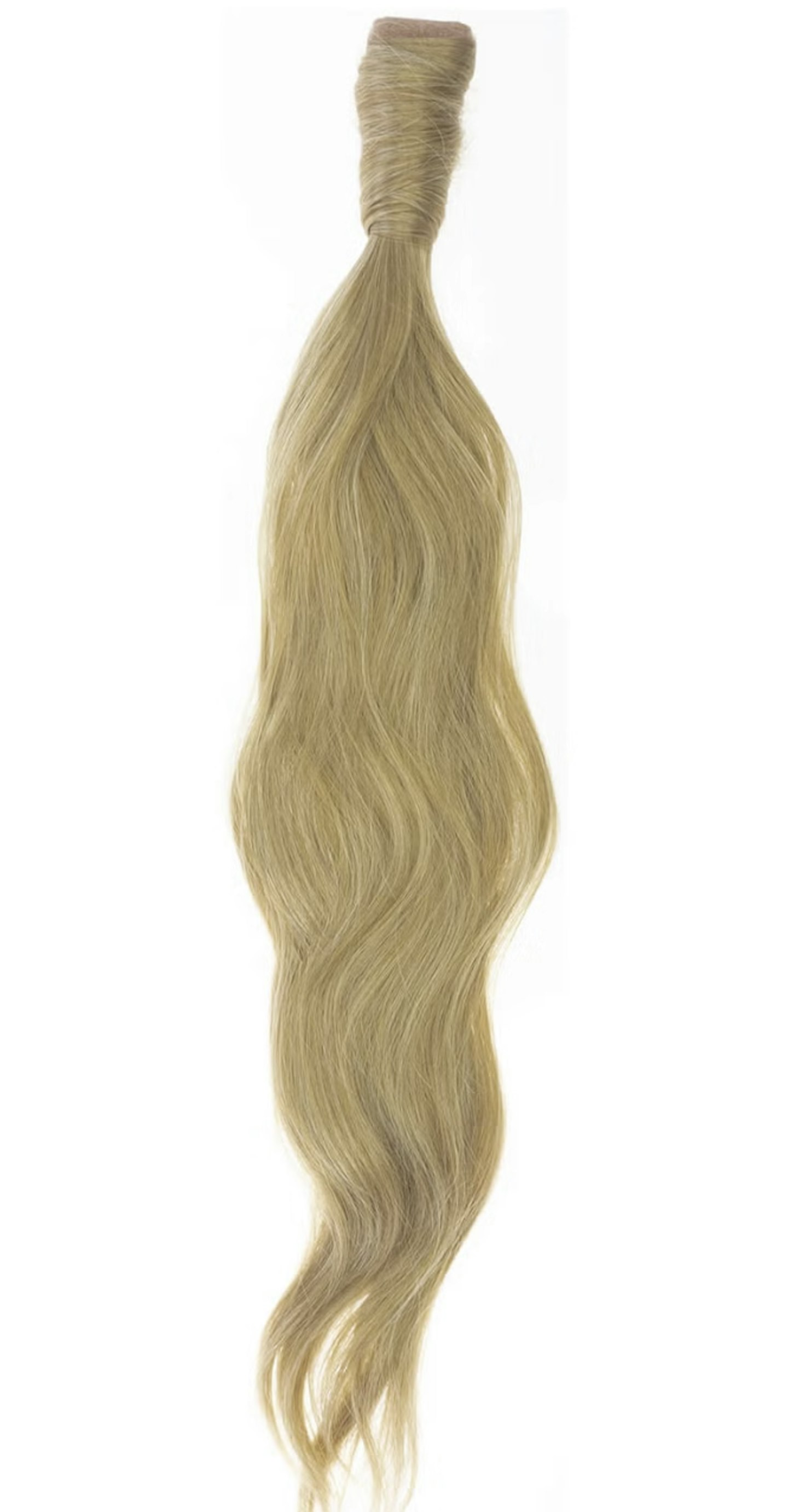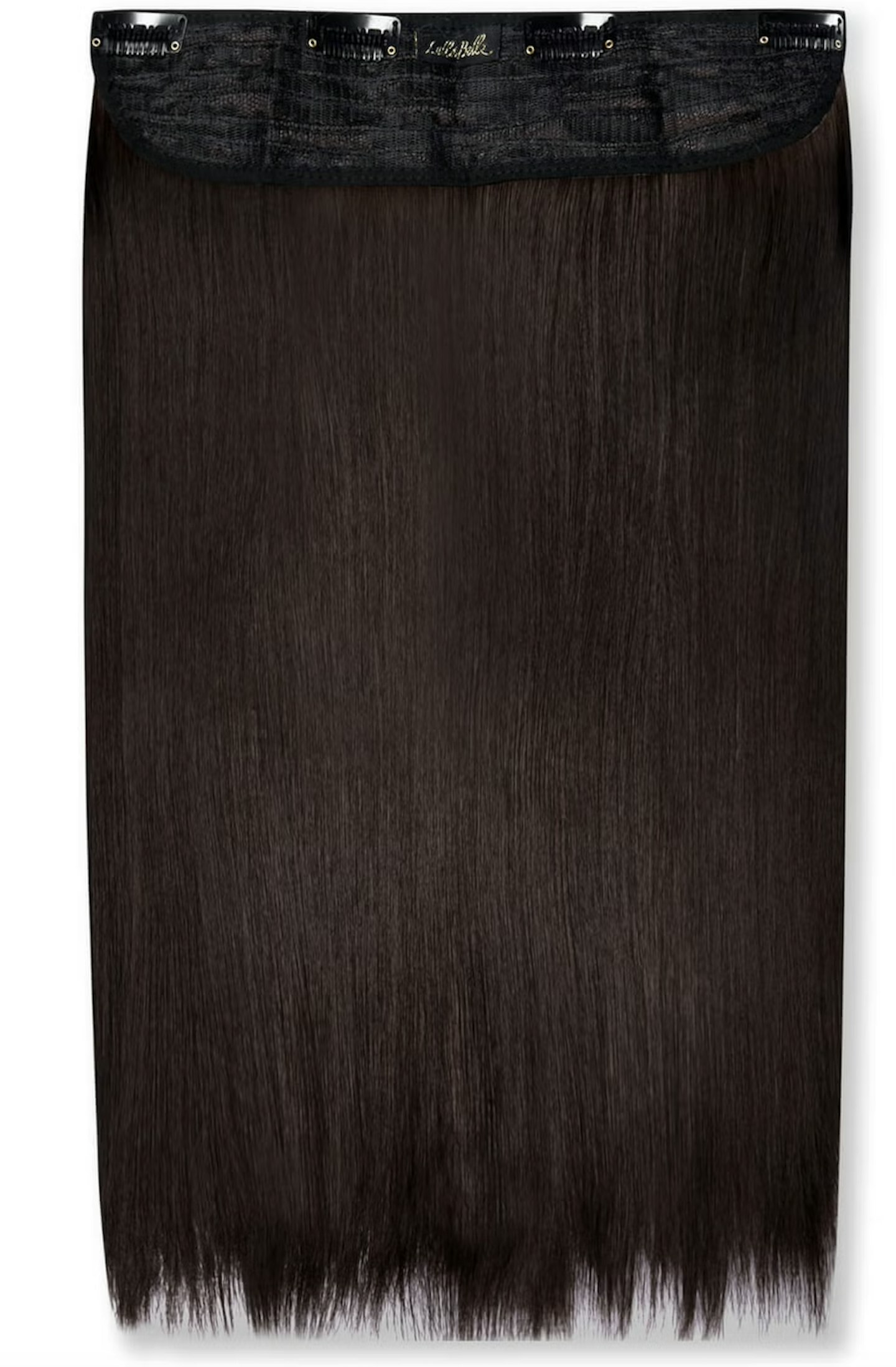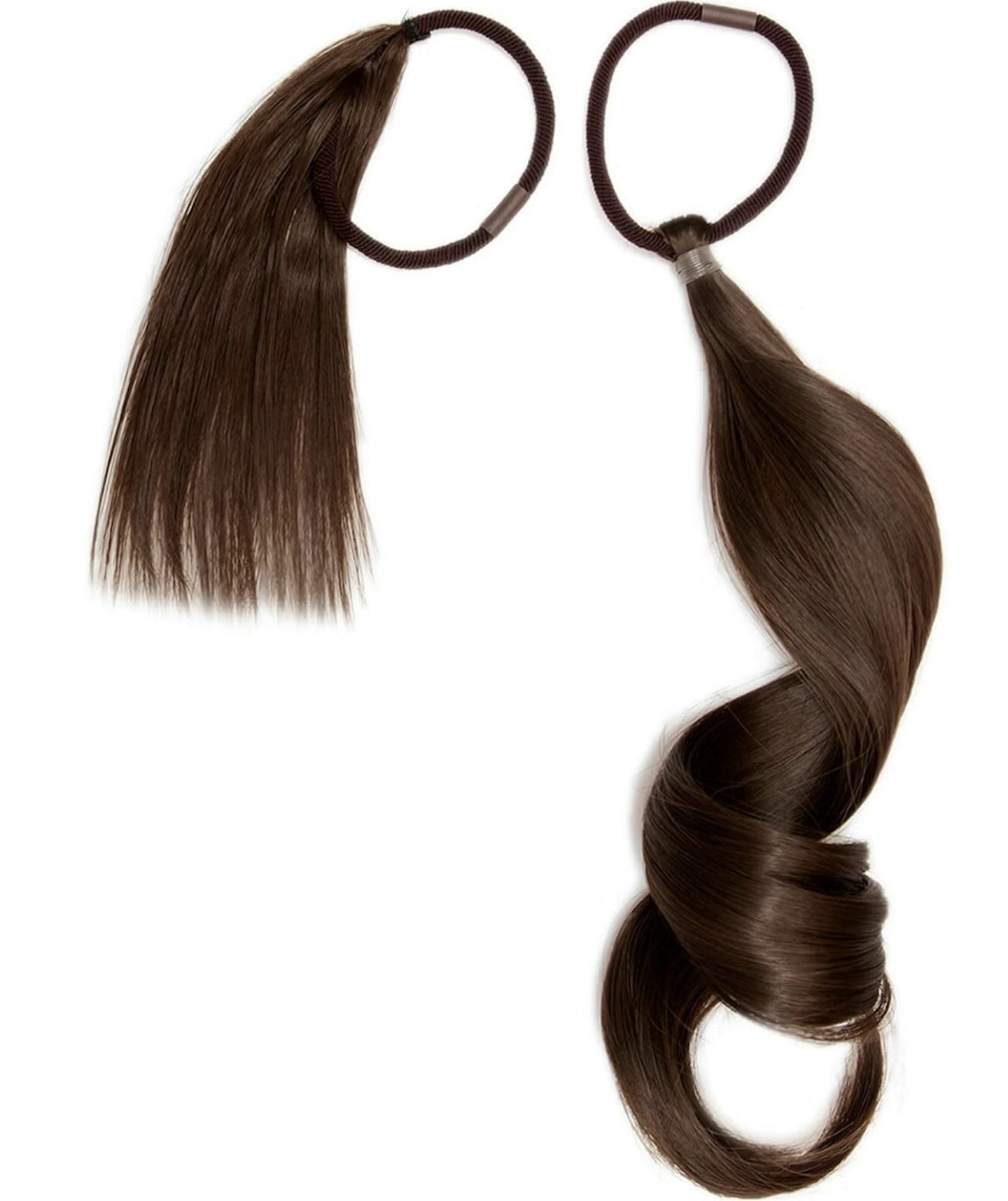If you’ve ever lusted after longer, thicker hair – you might well have considered hair extensions. The celebrity-approved secret to length and body, the beauty industry's hair extensions offering is ever evolving and with so many iterations on the table, hitting on the perfect hair extension type for you can be an overwhelming business. And now that it's officially wedding season, you might be considering the best hair extensions for your wedding day.
'Having recently got married myself, I can personally attest that a good set of hair extensions is something worth shouting about,' says Rachael Martin, Grazia's beauty editor. 'My hair looked and felt thicker and healthier, plus, most importantly, they were natural looking. I'd suggest getting your extensions applied a few months before the wedding day itself, and then getting them reapplied - this will give you the chance to become familiar with how they feel and look. And don't forget to have them in for your hair trial too - they can impact the finished style massively.'

Rachael utilised tape extensions by Hanna Karlsson for her wedding day. Photography credit: Kat Mervyn
Now that there's more information to hand on ever before we've pooled it all together in our comprehensive guide alongside expert commentary from Hanna Karlsson at G&H hair and Nicole Petty at Milk + Blush.
Below, discover everything you need to know about getting hair extensions for your wedding day and beyond, from the various types available decoded to how to care for your hair extensions at home.
What are the different types of hair extensions available?
Bonds
Bonded hair extensions are some of the most popular types on the market. But there are various forms to consider.
‘Flat tip extensions are a professional hair extension method. They're flexible, comfortable to wear and virtually undetectable with any hairstyle. The keratin bonds are resilient against heat and water and designed for durability yet gentle on the hair,’ says Petty.
‘Flat-tip hair extensions are by far the most discreet, longest-lasting hair and lowest maintenance extensions currently available so could be great if you're a bride to be,' says Petty, 'That said, you must also be prepared to regularly brush your hair throughout the day to avoid tangles, as well as limit the amount you wash your hair. Once a week is ideal.’
‘Then there's Nano tip extensions, which are a pre-bonded method that allow clients to achieve long-lasting results without using heat or glues.’
Nano tip extensions are a heatless method, where natural hair is simply threaded through a nano ring at the tip of the nano extension before being clamped into place. This application method reduces the risk of damage to natural hair, making it a popular extension choice.’
Tape Extensions
'A tape extension is a permanent lightweight weft of hair secured at the top with a sticky tab,' explains Karlsson. 'This tab is made up of a gentle medical glue tape. In my opinion, this is a great method to add volume and/or length to the hair. Not only is the application time much quicker than individual bonded or beaded strand extensions, but I'd say it's also a great option for those who want to add some colour - say a touch of balayage way without creating bleach damage. For those reasons this is my recommendation for brides - in my opinion they create the least damage.'
‘Tape-ins are one of the most popular styles of semi-permanent extensions and can suit almost any hair type,’ adds Petty.
‘They are incredibly lightweight and the least likely to pull hair, making them one of the least damaging hair extensions on the market. However, costly maintenance appointments (usually every six to eight weeks), could put off those not prepared to commit to the investment.‘
'The good thing with tape extensions is that during re application you can use the same extensions again, how many times it can be reused is depending on the quality of hair and how well the client has looked after it at home,' says Karlsson.
Weave
‘A weave is another permanent method of applying hair extensions which generally involves gluing or sewing a piece of hair onto your natural hair braided flat against your scalp,' says Petty
‘On the pricier side of the extension options - weaves last for around six to eight weeks and require expert installation to ensure they aren’t pulling on your scalp.’
‘However, people with weaves should be careful not to wash them too often,' Petty continues, 'as this can loosen the braid base and cause the weave to slip down.’
Clip-ins
‘Clip-in extensions are the cheapest option, giving wearers plenty of versatility over when and how they wear extensions,’ says Petty. ‘Plus, they are great for adding a bit of extra volume and length to your hair without the commitment or damage of more permanent options.’
‘But they may not be convenient for those that want to wear extensions every day and can be trickier to blend without the help of a stylist.’
'I'd also add that clip ins aren't really suited to an everyday look,' says Karlsson. 'They are more for adding in for special occasions. They work by attaching to your hair with the clips attached to the weft and they can feel heavy on the head. They are fun however! You can get ponytails and fringes to change up your look for an evening. Plus they are a great option for brides looking to add more volume to their up-do.'
Shop: Your Hair Extension IT Kit

www.lookfantastic.com
Blondies, rejoice, as this mega-long ponytail will blend seamlessly if you sport a creamy shade.

www.lookfantastic.com
Make switching up your style easy with these chocolate brown extensions by LullaBellz. Our top tip? Section hair well before applying to prevent tugging and breakage.

www.lookfantastic.com
A great way to tap into thicker, fuller hair without any of the tugging. Wrap your strands into a bun for a voluminous look in an instant.
Do extensions cause damage to your natural hair?
Kim Kardashian recently shared a TikTok showing her natural hair, which looks noticeably finer than the locks we're used to seeing. Since then, Google searches for “do hair extensions damage hair” has seen a huge 9,100% uplift.
While historically, extensions got a bad rep for damaging hair, these days most types of extensions shouldn't cause any damage if you've locked down a good pro and your aftercare is hitting the mark. The key to keeping your hair healthy? Always get a professional to apply them. Follow the proper aftercare guidance and you choose the correct style for your hair type and lifestyle.
'If you're concerned about hair health, start with non-permanent options, such as clip-ins,' suggests Petty.
'A lighter-weight set will comfortably give you temporary length and volume while allowing your head and neck a break from the additional weight.'
How should you prepare your hair ahead of getting extensions?
‘Whether you are a regular extension wearer and are in between appointments, or you’re a first timer, the key to ensuring your extensions don’t cause damage is to get your natural hair in good shape,’ says Brenda Lee Intignano, extensions and trend expert from Cliphair. ‘Ideally, your natural hair should be smooth and not brittle, so try and give your hair intensive conditioning treatments in the lead-up to applying your extensions. Also as a rule of thumb, you should avoid heat tools and anything that dries your strands out, as these can cause breakage.
Right before either your salon appointment, or before you apply your extensions yourself, your hair should be freshly washed, dried and completely free from tangles.’
‘Depending on the type of extensions you opt for, you may or may not need to visit a professional. If you are looking for a quick transformation and don’t plan on wearing extensions for a long period of time, then clip-in hair extensions are the best and easiest choice. Clip-ins are one of the most popular types of extensions as they allow wearers to clip them in and out, easily and comfortably.
If you would prefer longer-lasting extensions, tape-in hair extensions or nano ring extensions are both great options.’
How should you wash hair extensions?
'These days, most extensions are made of human hair, and use a keratin bond or a medical grade tape, so that they allow you to wash and shampoo your hair like normal,' explains celebrity hair stylist and extension expert Hadley Yates, who uses Great Lengths extensions at his London salon.
'You should always use a sulphate free shampoo to protect your extensions. Most extension brands will have a recommended product range or you can always ask your stylist to recommended what they think would suit your hair needs best.'
‘Perhaps an overlooked step in your new haircare routine, you must ensure you brush your hair carefully,’ advises Brenda. ‘Be wary not to brush your hair or extensions too harshly and instead lighten your hand. Start brushing in a downward motion at the end of your hair, with your free hand holding the hair firmly at the attachment points to avoid tugging or straining. Slowly work your way up towards the roots, making sure you only brush in a downward motion.’
Hair Extension After Care According To Hanna Karlsson
-
Use the shampoo and conditioner that your hairdresser has advised.
-
Use a heat-protecting leave in cream as well a nourishing serum or oil in the ends.
-
Make sure extensions never knot and always brush them gently working the ends first and then upwards.
-
Always dry the extensions and tapes by lifting and sectioning the hair.
-
Make sure not to get any oily products on the tape attachment like serums and conditioners.
-
Always gently shampoo the tapes to get any oil from scalp or sticky residue out.
How often do extensions need changing?
'How long your extensions will last largely depends on which extension method you use,' explains Yates. 'For bonds, I’d recommend keeping them in for no longer than 4 months. This is because your natural hair will still shed around the bond and it will become harder to maintain your look once they’ve grown down. For tape-in extensions, you should keep them in for no longer than 8 weeks, as otherwise they’ll start to twist.'
'My expertise is in tape extensions and I'd say that these usually between 6 and 8 weeks,' says Karlsson. 'Then they need to be moved up what the hair has grown out as the tape weft will sit further down and follow clients regrowth.'
Chloe Burcham is a freelance health and beauty editor and contributes regularly to publications including Grazia, STYLIST, Women's Health, Refinery29
